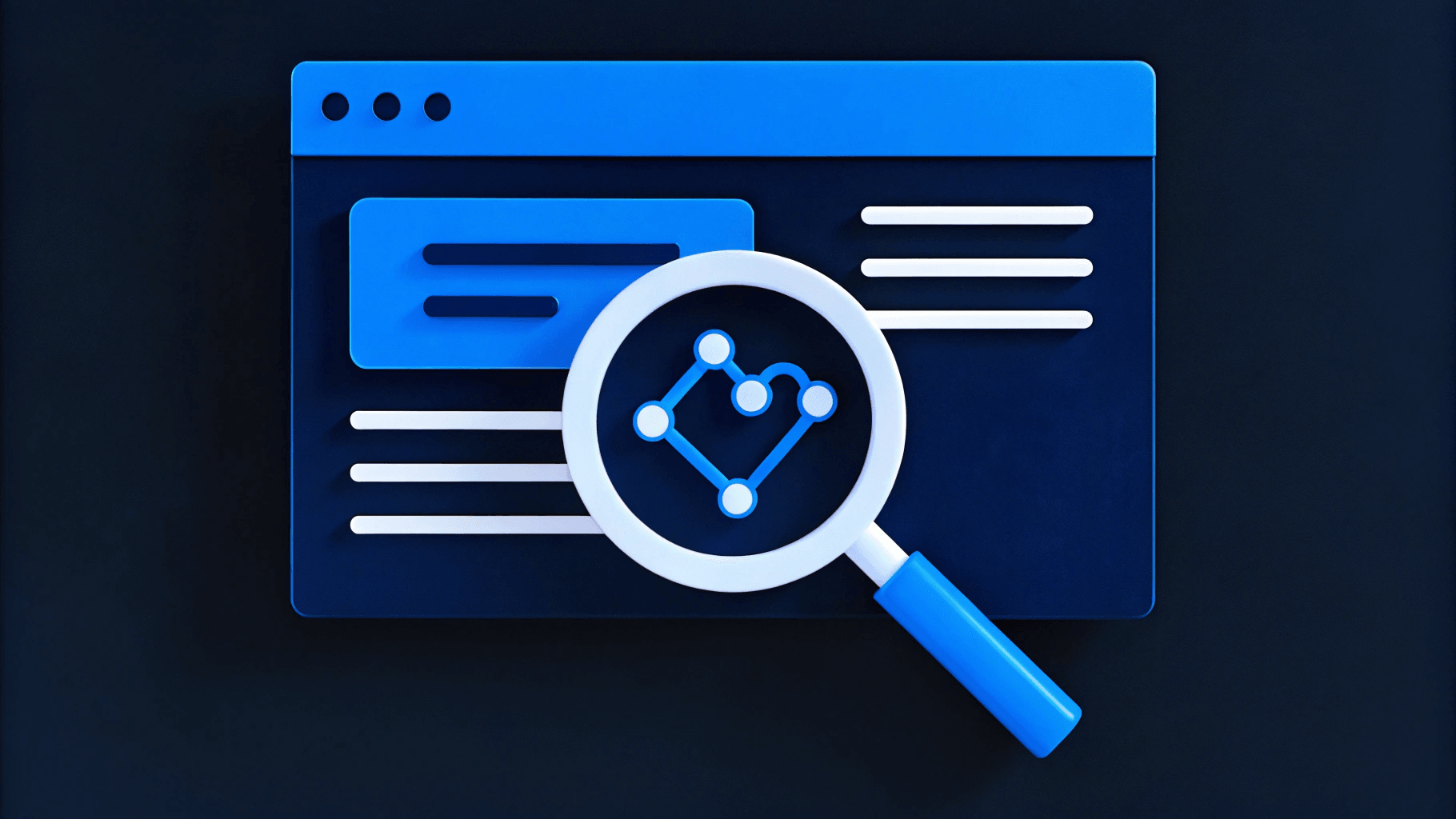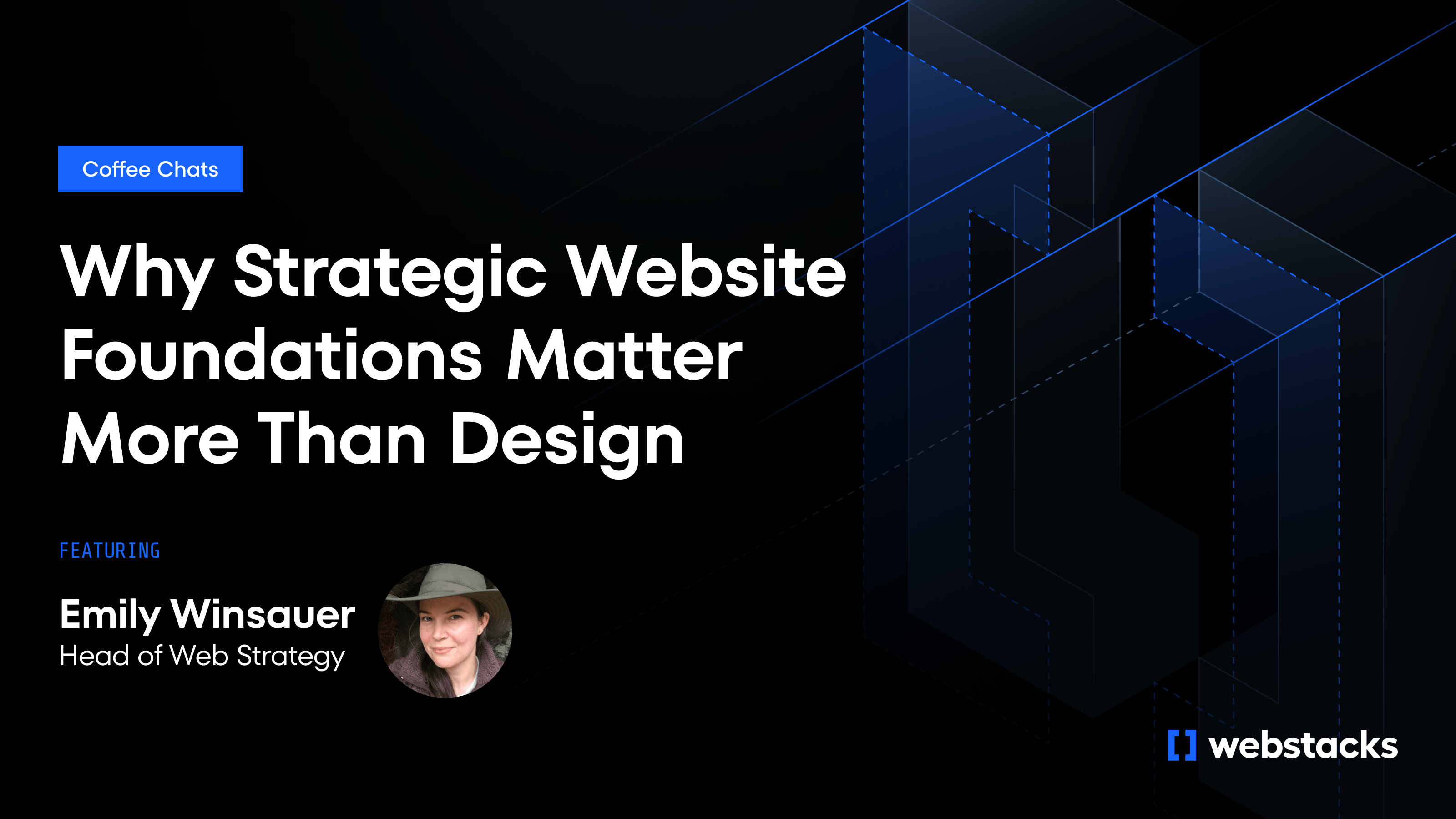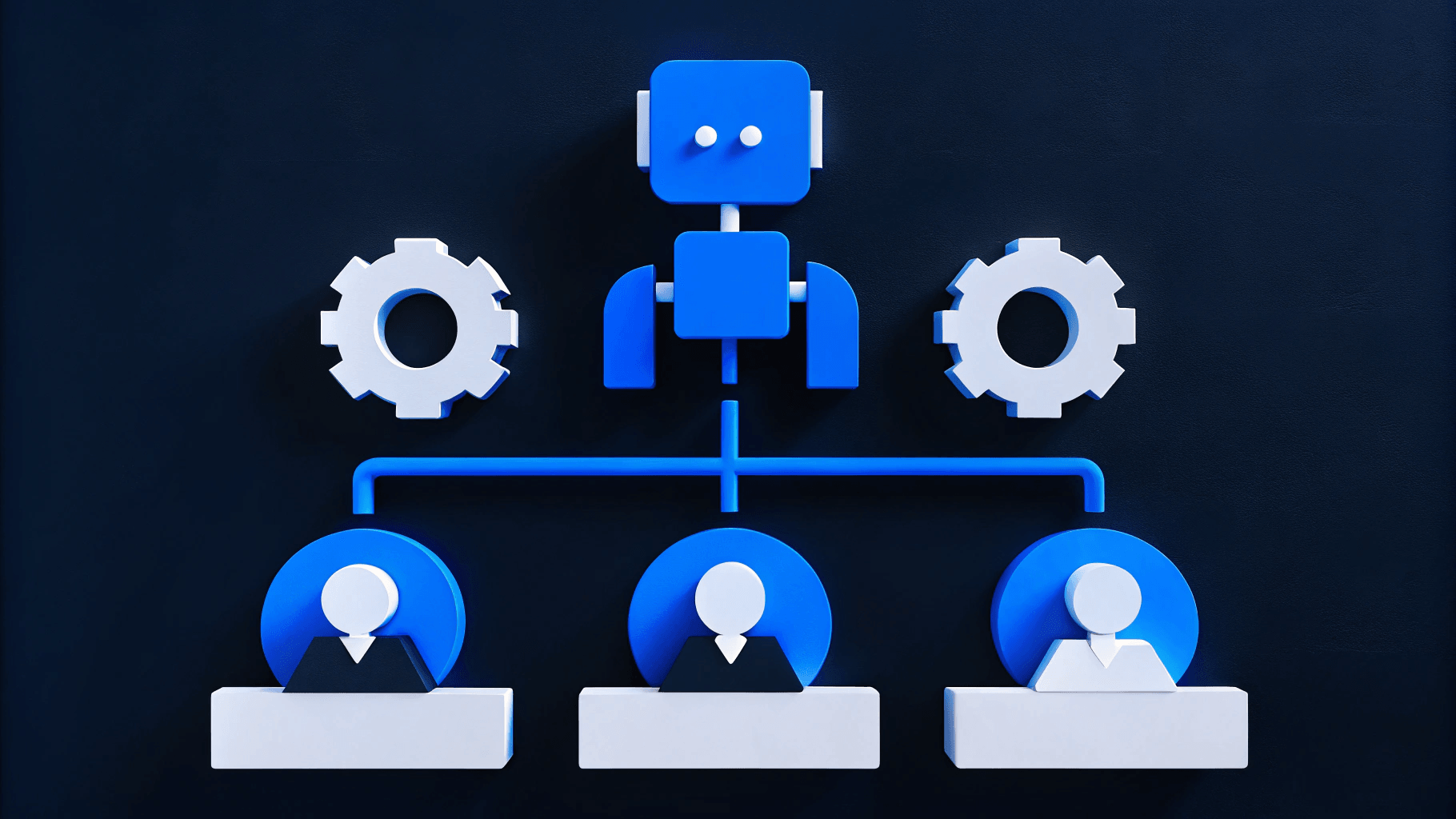Your website is a critical growth engine. At the heart of that engine is an enterprise web application.
Enterprise web applications are built to handle complexity. They serve multiple audiences, integrate with modern tech stacks, and support localization, accessibility, and governance. But more importantly, they return control to marketing and digital teams.
This guide breaks down enterprise web applications, their use by high-growth companies, and what makes Webstacks’ development approach different.
Whether you’re planning a redesign or evaluating your CMS, this article will help you understand what’s possible when your web presence is built like a product instead of a one-time project.

An Overview of Enterprise Web Applications
An enterprise web application is a custom web platform built to support complex business operations, marketing needs, and user experiences across multiple teams, audiences, and regions.
It’s designed to meet the needs of large-scale organizations.
Unlike traditional websites or smaller web apps, enterprise web applications are built for scale and flexibility. They serve as the operational and marketing foundation for organizations navigating multi-audience journeys and global content delivery.
At a technical level, an enterprise web app integrates with a composable CMS and tech stack, typically involving a headless CMS, design system, and frontend frameworks like Next.js or Gatsby.
But what sets it apart isn’t just the tech—it’s the architecture behind it.
These platforms are modular and allow marketing teams to build new content, landing pages, or microsites without looping in developers.
From a business standpoint, enterprise web apps unlock agility. Instead of treating the website as a one-and-done project, they support a product mindset: built to evolve, adapt, and grow over time.
As a web development agency, Webstacks believes enterprise web applications are more than just a technical asset. They’re also a strategic platform that enables our clients to scale campaigns, localize experiences, personalize journeys, and accelerate go-to-market motions without hitting bottlenecks.
What Are the Benefits of Enterprise Web Applications?
Enterprise web applications have major benefits for large organizations managing complex operations, distributed teams, and diverse customer segments.
Centralized Digital Hubs for Multi-Brand Experiences
Many enterprises manage multiple products, services, or sub-brands across regions or verticals. A modern web application allows teams to centralize digital efforts while preserving the autonomy needed for each business unit.
Whether through a multi-site CMS or modular design system, you can maintain consistent branding and governance without forcing every team into the same rigid mold.
📌 For example, Webstacks client Justworks implemented a scalable architecture and design system that enabled different teams to manage segmented user journeys in a consistent way.
Marketing Velocity Through Modular CMS Architecture
Enterprise marketers can’t afford to wait in dev queues for every site update or landing page.
With a composable web application built on reusable components and a headless CMS, teams can create, launch, and iterate independently. This approach is fast, which is critical for running campaigns or responding to market shifts in real time.
📌 For example, ServiceTitan partnered with Webstacks to implement a modular design system and headless CMS. It gave their marketing team the ability to create and manage pages on their own.
Scalable Personalization Across Buyer Journeys
From SMBs to global enterprises, your site needs to serve multiple personas across the funnel. Enterprise web applications allow you to create personalized experiences through structured content, flexible layouts, and intelligent routing. It makes it easier to support marketing campaigns with precision and relevance.
Localization for Global Reach
If your business operates across borders, your web presence needs to reflect that. Enterprise applications support multilingual content, regional compliance, and localized design, all managed from a unified backend.
What Are the Key Features of an Enterprise Web Application?
Not all web applications are suitable for enterprise. You need features that enable speed, scale, and autonomy. Below are the defining features of a high-performing enterprise web application.
Headless CMS Integrations
Headless CMS platforms typically power enterprise web applications. Some of the best options include Contentful, Sanity, and DatoCMS.
These systems separate content management from presentation, allowing marketers to manage content in one place and publish it across channels.
The outcome is faster content updates, multichannel publishing, and fewer dev dependencies.
Implementing a headless CMS can be tricky depending on your in-house resources. A web development agency such as Webstacks can help you with the migration process.
Component-Based Design Systems
Rather than hard-coding entire pages, enterprise applications are built from a reusable library of components. Think of them as brand-aligned “lego blocks” with visual and functional variants. These modular design systems enable high levels of customization.
The outcome is campaign agility, brand consistency, and efficient scaling of new pages or experiences.
Jamstack Architecture for Performance and SEO
The best enterprise web applications use a Jamstack architecture. This approach pre-renders pages for faster load times, and improves security and SEO.
Advanced Governance and Role Management
Enterprise teams often span multiple departments and regions. Web applications must support structured workflows, granular permissions, and editorial guardrails. By embedding governance into the CMS, you can reduce risk without sacrificing speed.

What Kind of Enterprise Challenges Do Web Applications Solve?
Enterprise teams face a unique set of challenges, many of which stem from outdated systems, rigid processes, or overreliance on technical teams.
A modern enterprise web application directly addresses these obstacles.
Developer Bottlenecks
In many organizations, even minor website updates require a developer ticket. This creates delays and frustrates marketing teams.
At Webstacks, we return control to marketers by reducing dev dependencies and building systems that enable fast, independent publishing. Our B2B back-end development expertise allows us to build web applications with reusable components and editor-friendly CMS platforms, changing that dynamic and empowering non-technical users to own and operate the site post-launch.
Legacy CMS Friction
Legacy CMS platforms often fail to support multilingual content, responsive design, or performance optimization. They can also be difficult to scale or customize.
A headless setup with a modern frontend solves these problems.
At Webstacks, we help clients migrate to scalable CMS platforms tailored to their architecture needs, in a way that doesn’t sacrifice usability.
Siloed Brand Management
Enterprises managing multiple brands, product lines, or regions often struggle with fragmented digital experiences. An enterprise web application supports centralized governance and localized autonomy.
Rigid Templates That Stifle Creativity
Template fatigue is real. Enterprise teams need flexibility to run campaigns, launch initiatives, and support new offerings. In an enterprise web application, you can build systems with low component counts but high visual variation, supporting dark/light modes, background imagery, animation, and more.
Performance, SEO, and Accessibility Requirements
Enterprise websites face high expectations for speed, discoverability, and compliance. A modern tech stack and modular architecture handle these demands.
Frameworks like Next.js and Gatsby deliver fast load times through static site generation, server-side rendering, and asset loading.
A modular approach supports strong SEO with clean URLs, structured data, and easily crawlable content. Performance and mobile optimization further boost search rankings.
Design systems built around reusable components make accessibility easier to maintain. You can enforce standards like proper color contrast, keyboard navigation, and ARIA support at the component level.
How Webstacks Builds Enterprise Web Applications
Most agencies still approach web development as a linear, one-and-done project. At Webstacks, we see it differently. We treat your website as a product that evolves, improves, and drives results over time. That philosophy shapes everything we do, from strategy and design to development and deployment.
Strategy Comes First
Every Webstacks engagement begins with discovery, not design. We align with internal stakeholders, analyze your current site and competitors, and map out a web strategy grounded in business goals. This includes a prioritized content and page roadmap based on need, effort, and value.
Parallelized, Modular Delivery
While traditional agencies move sequentially from research to design to development, we break that mold. Building modular components first allows developers and designers to work in parallel, and accelerate timelines.
Component-Based Design Systems
We don’t build static templates but design flexible systems. Our component libraries are intentionally lean but highly adaptable, so marketing teams create on-brand pages with minimal effort and no code.
Tech-Agnostic Stack Recommendations
We don’t promote a preferred CMS or frontend framework. Instead, we assess your needs and recommend the right combination of tools, whether Contentful, Sanity, or DatoCMS on the backend or Next.js and Vercel on the frontend.
Documentation and Enablement
We don’t just hand off the site to your team. Every engagement includes async training, detailed documentation, and tooling recommendations so your internal team can move with confidence post-launch.
Get Started with an Enterprise Web Application
If your current web presence feels rigid or difficult to manage, it may be time to rethink your architecture and shift to a scalable enterprise web application.
You should consider replatforming if you’re experiencing any of the following:
- You rely heavily on developers for everyday updates
- Your CMS can’t handle multi-language or multi-region content
- You’re managing multiple websites without central governance
- Your site is slow, underperforming in search, or difficult to scale
- Marketing campaigns take weeks to go live due to rigid templates or bottlenecks
At Webstacks, we specialize in helping enterprise teams build the web foundations they need to move fast and grow with confidence. Whether you’re exploring a CMS migration, modular design system, or a complete digital overhaul, we bring the strategic guidance and technical expertise to help you make it happen.
Let’s build a web platform that works for you.




